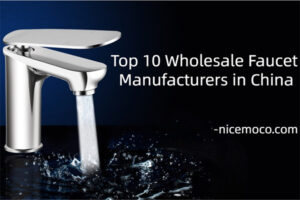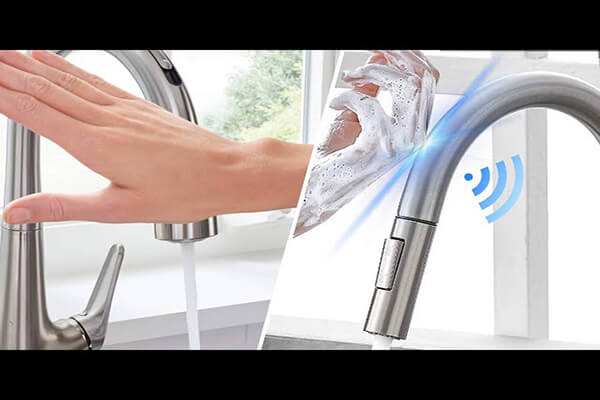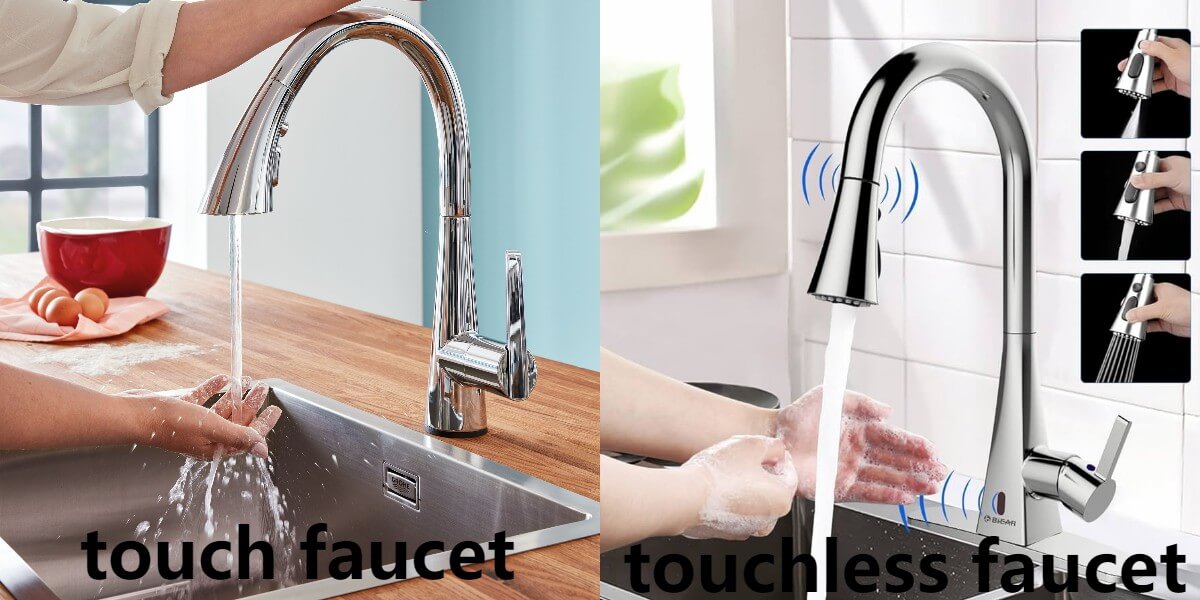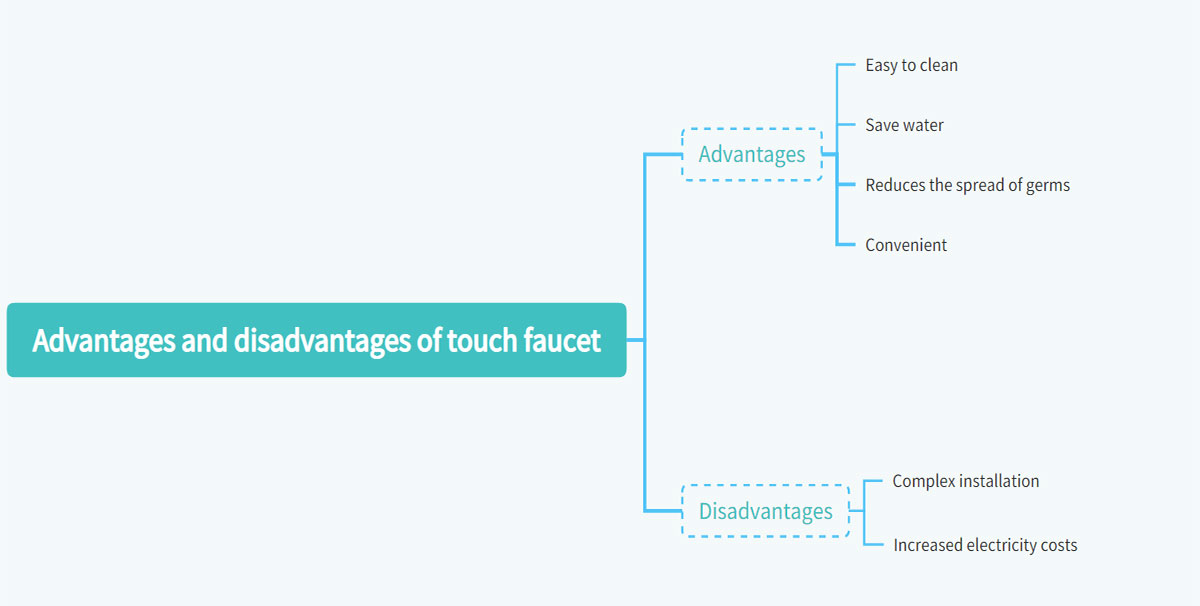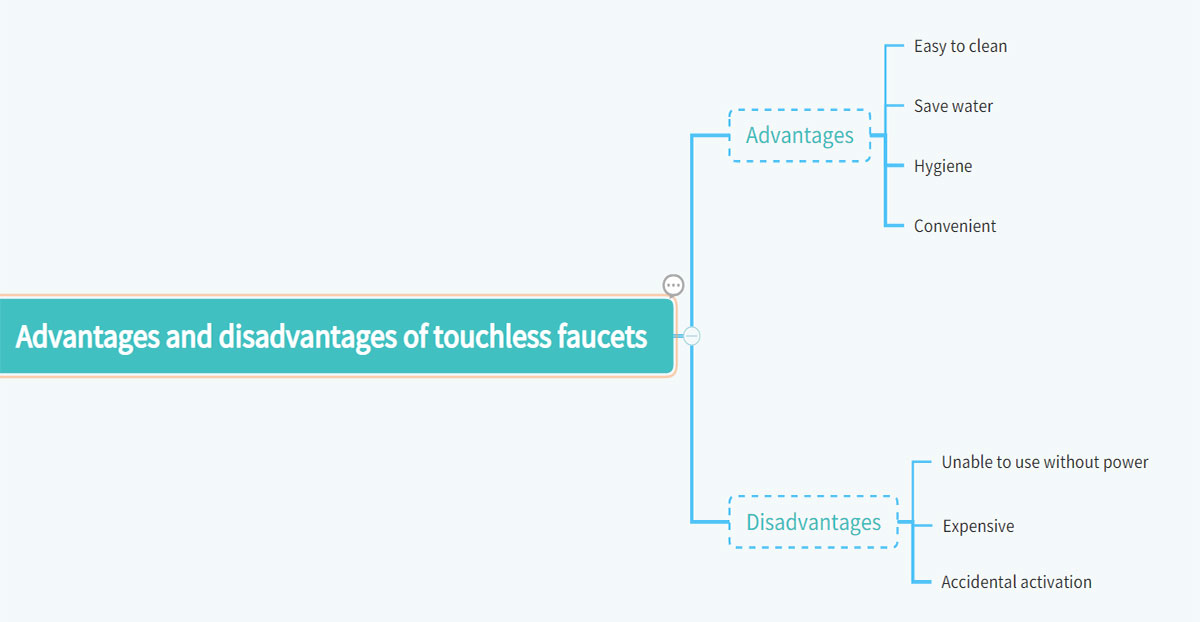There are various types of faucet options, but there is one type of faucet that is nothing like a traditional faucet. That is the touchless faucet, which releases water through touch sensing. When you upgrade your kitchen, will you choose a touch faucet or a touchless faucet? Both are great options, but you might not know how to choose between the two. In today’s guide, we’ll explore the differences between touch and touchless faucets. Read on to learn more.
1. Touch vs. Touchless Faucet: definition
Here is a comparison of the definitions of touch faucets and touchless faucets.
1) What is a touch faucet?
Touch kitchen faucets allow users to start and stop the flow of water with a single touch, usually on the faucet spout. Some models have additional features, such as automatically turning off the water after a few seconds, eliminating the need for a second tap. Touch faucets have been around for years, but they are growing in popularity as homeowners place a renewed emphasis on technology and convenience around the house.
2) What is a touchless faucet?
Touchless faucets feature technology that allows you to start the flow of water without touching the faucet. Instead, simply place your hand under the spout, and the water will start flowing and stop when you remove your hand.
Both are innovative versions of traditional kitchen faucets. On the basis of traditional faucets, the operation of pushing and pulling the faucet handle is greatly reduced. The main difference between the two is that touch kitchen faucets react to physical touch, while touchless kitchen faucets detect if there is an object in front of them.
(Another related post: Kitchen Faucet Flow: Everything You Need to Know)
2. Touch vs. Touchless Faucet: working principle
The following is a comparison of how touch faucets and non-touch faucets work.
1) How do touch faucets work?
Did you find out? Opening a touch faucet is like swiping the screen on your smartphone. Yes, touch faucets actually use a variation of the same technology as smartphones. Everyone has a characteristic called capacitance. Its unit of measurement is called Farad. The human body typically has a capacitance of 22 picofarads.
Our electronics are stored in the capacitive sensor and then the capacitive touch sensor of the touch faucet is basically a sensing device that measures the capacitance in its environment. When a capacitive sensor senses the presence of electronic components in the air, it establishes a baseline level of capacitance. Once determined, it looks for the increase in capacitance that occurs when a person touches the faucet (22 farads in the human body). The sensor detects the increase in capacitance and turns the water flow on or off. A decrease in capacitance is also detected when a person releases the faucet.
Some touch faucets have slightly more complex designs that can differentiate between a long hold and a single, simple touch. The retention mode determines the amount of water output. You can also control the temperature of the handle, the first time you turn on the faucet. The second wait is to adjust the water temperature. You can adjust the temperature to a suitable level with the touch handle.
However, if you are buying a touch tap for the first time, this is an elegant and quick solution. Can help you have an extra hand when cooking in the kitchen. Thereby easing your hectic situation.
(Another related post: What are the Best Materials for Bathroom Faucets?)
2) How does the touchless water faucet work?
A touchless or automatic faucet consists of five main components. These components include nozzles, sensor windows, solenoid valves, power supplies, and waterproof connectors.
Sensor: After detecting your hand, the sensor forwards the signal to the valve to open the faucet.
Solenoid valve: A positive or negative signal from the sensor controls the solenoid valve. The polarity of the signal determines whether the solenoid will perform a pulling or pushing action. These valves use a rubber-like disc to control the flow of water. When the hand is no longer present, the solenoid will close the valve with a push action.
Power supply: Every touchless or automatic faucet requires power to operate, although the power supply can vary. While some models are powered by dry cells, other faucets will use low-voltage current from an AC transformer.
Spout: The spout is the channel through which water flows out. They are available in different materials. Expensive models are usually made of brass. The cheaper type is made of zinc.
Waterproof connecting cable: As a key component, the waterproof connecting cable connects various sub-components, like a bridge, connecting the sensor with the solenoid valve, power battery, or AC adapter.
Touchless faucets simply move your hand under the faucet to control the flow of water. Of course, there are other types of sensors on the market. For example, with ultrasonic sensors, moving your hand in front of the sensor disrupts the magnetic field, which signals a faucet to be turned on or off.
(Another related post: A Complete Guide for Buying Faucets)
3. Touch vs. Touchless Faucet: advantages and disadvantages
Let’s discuss the pros and cons of touch vs. touchless kitchen sink faucets. You will notice that these benefits are very similar to those of a touch faucet:
1) Touch faucet
There are some advantages to touch faucets, but it comes down to convenience. The ability to quickly control your faucet makes it easier to complete a host of daily tasks, saving you time. There are a few other reasons why we think touch faucets are a smart idea:
#1. Easy to clean
Most touch faucets are finished in stainless steel, which is easy to clean. After using the kitchen, just wipe it with a rag and it will be back in good condition. Some people will use their clean elbows to touch the switch if their hands are stained with spices while cooking. This protects the faucet from contamination. This reduces the time spent cleaning the faucet.
#2. Save water
One of the design features of touch faucets is that when you touch it once, the water will continue to flow for a few seconds. The water flow will automatically stop after a few seconds. This avoids the situation where traditional faucets forget to turn off the valve and the water flow continues.
#3. Reduces the spread of germs
Traditional push-pull handle faucets increase the risk of germs spreading. For example, if you turn on the faucet after handling raw meat, there may be salmonella on the faucet handle. And instead of letting raw eggs or meat get on the handle, touch faucets allow you to wash without spreading germs.
#4. Convenient
The touch faucet only needs to touch the switch to turn on the water flow, which is very convenient for children or the elderly with limited mobility.
However, the disadvantages of contact faucets are:
#5. Complex installation
Compared to traditional faucets, contact faucets are more difficult to install. Therefore, you need to hire professional personnel to install it.
#6. Increased electricity costs
Since contact faucets run on electricity, they increase household electricity costs.
2) Touchless faucets
Here are the benefits of touchless faucets.
#1. Easy to clean
Touchless faucets are easier to clean than touch faucets. Because you don’t have to touch the faucet to turn on the water, this means that even if your hands are covered in condiments, they won’t get stuck to the faucet handle.
#2. Save water
Touchless faucets only turn on the water when an infrared sensor inside the faucet senses you. Therefore, the situation of forgetting to turn off the valve and causing continuous dripping is avoided.
#3. Hygiene
Hygiene is the biggest advantage of touchless faucets, being touchless means you completely avoid mess and the spread of germs. Just wave your hand to operate the faucet.
#4. Convenience
Like touch faucets, touchless faucets are easy to operate. Especially for children, touchless faucets are the easiest to use because they don’t even need to reach out and touch the faucet like touch-sensitive faucets.
However, the disadvantages of touchless faucets are:
#5. Unable to use without power
Both contact faucets and non-contact faucets need to be connected to electricity to use. Therefore, if there is a power outage or circuit failure at home, they will not be able to use it.
#6. Expensive
Compared with contact faucets, contactless faucets are more expensive. The cost of repairs will also be higher because you need to find professional maintenance personnel to repair it.
#7. Accidental activation
Because contactless faucets are infrared sensor switches, the faucet will also turn on if a pet crawls across it or if you accidentally sense the switch while moving dishes.
(Another related post: Smart Faucet: All You Need to Know)
4. Touch Faucet or Touchless Faucet
Both touch and touchless faucets offer impressive upgrades compared to traditional faucets. Both options exist because people have different preferences for which is best.
1) Preference
People often find themselves opening the kitchen sink with dough, raw meat, or other food in their hands, and they may want a completely contactless experience. The same may be true for those who regularly work in other jobs such as gardening or pottery. Touchless faucets are ideal when you want water on demand without causing a mess.
Some people prefer touch-sensitive faucets because it gives the user more control. You’re less likely to accidentally turn the faucet on or off when you have to physically touch it rather than move in front of it. Since you can activate these faucets by touching them with your wrist or elbow, you can still usually avoid transferring dirt from your hands to the faucet.
2) Installation
What type of countertop is it installed on? Certain materials, such as quartz, can cause problems with the sensors on these faucets. And quartz is clean, elegant, and beautiful. However, it sometimes contains enough metal to carry a capacitive charge from the counter/backsplash to the sensor, which can accidentally turn on the sensor, especially if the quartz is too close to the faucet itself. It’s best to double-check to make sure this doesn’t happen to you!
Choose professional installation and be prepared for adjustments. One thing is for sure: these are not traditional faucets! They’re full of parts and components, require electricity (you know electricity and water don’t mix), and therefore require skilled installers. Of course, some faucet manufacturers also provide installation services. With so many moving parts, going sideways is more likely. You’ll need a professional to install it, and it may require some adjustments before you reach the desired level of functionality.
3) Budget
Of course, budget is the most important thing. Contact faucets are cheaper than touchless faucets. If you have the budget, we recommend installing a touchless faucet. This will be more convenient for you.
5. Conclusion
The above is the difference between contact faucets and non-contact faucets that we have summarized for you. In fact, you can’t go wrong with any faucet you choose as long as you do your research and install it the right way. When making your choice, please make it based on your actual situation and preferences.


